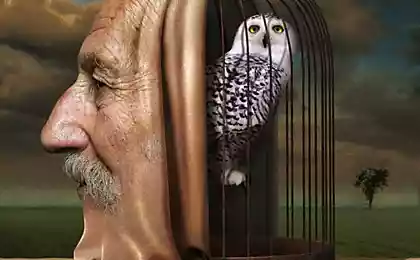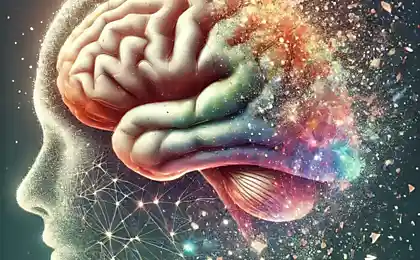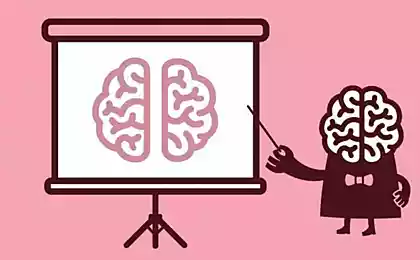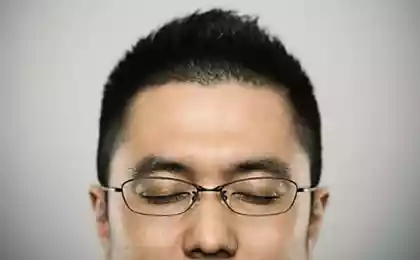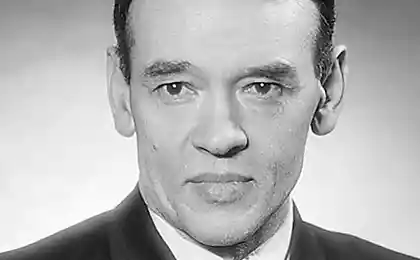People love to see up to 90% of the information about the world we receive by means of view. It would seem that it is just because we need it and should work perfectly and flawlessly. Not a bit of it! The trick in the relationship between the eye and the brain, because my eyes just receive information, process it in my head. And that is why there are pictures, illusions, brain is able to bring down confused: what the eyes see, absolutely not fit with the way the brain interprets visual images.
Website publishes a selection of very interesting optical illusions.
Hering Illusion h2> 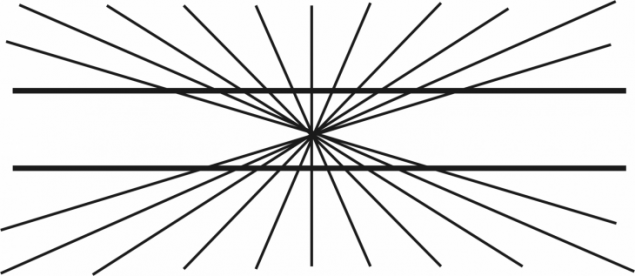
It may seem that the figure above two horizontal lines are bent when they are actually straight and perfectly parallel. Do not believe me? Try increasing this image to check with a ruler.
Do you know why there is such an illusion? Because our eyes to some degree see the future! Between the time when the light falls on the retina and the moment when the brain has time to absorb and process information from the eyes, there is a slight delay, measured in milliseconds. But in the evolution of the brain has learned to compensate for this delay. By processing the signals from the organs of sight, he tries to forecast , will look like the picture that we see in the future, through the best of a second. With this ability, we can avoid a collision with other people in a crowd or catch a ball on the fly.
Parallel lines appear to be bent, because the brain is trying to "compensate" visual strain, we observed in fast motion.
Ponzo illusion h2>
Two figures in the image on the left and two black lines on the right are the same size picture. The illusion is caused by the phenomenon of linear perspective, we exist because we see the world in three dimensions. If the two lines converge (such as a wall in the image above), our brain thinks that they are parallel, but stretching into the distance. In fact, it's the same thing as looking at the rails, standing between them. You would think that somewhere in the distance, they agree, but in fact they are strictly parallel.
In the above pictured right objects are interpreted by our brain as more distant. Therefore, he concludes that they are larger.
Rotary dancer h2>
Many Internet users watched a video or animation depicting a rotating dancer. It is believed that if you feel like it is spinning clockwise, you are a creative person, and the leading hemisphere of your brain - right. If you see a counter-clockwise rotation, then prone to logical reasoning, and the left hemisphere of the brain is dominant over the right. This is not true. From the way you perceive the dancer, it is impossible to make such conclusions.
This optical illusion is called a reversible or ambiguous. It is a two-dimensional image, however, our brain tries to interpret it as three-dimensional, "adding" depth measurement. You can force yourself to yourself to see the rotation in either direction.
False spiral h2> 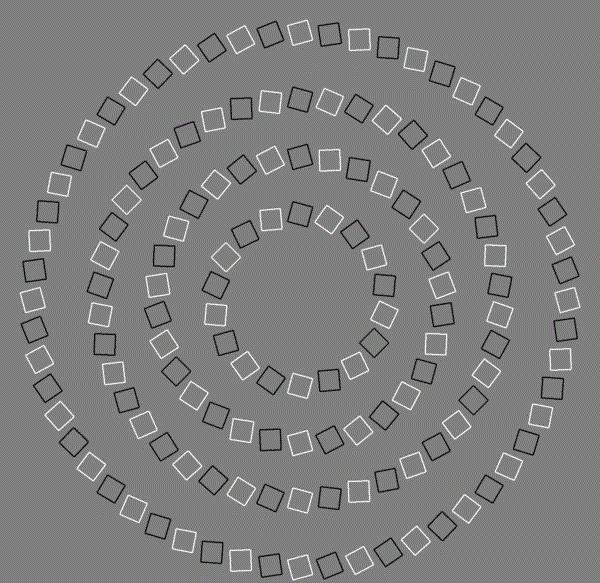
In this picture squares form a spiral? No, it's perfect concentric circles. If you do not believe us, you can hold your finger on a circle. You will see that it does not intersect with other circles.
All squares are arranged at different slopes, which makes us think that they shape converging toward the center of the spiral.
Afterimage h2>
Including video and stares at the black dot in the center. When a multi-colored background will turn into a black-and-white, a few seconds you'll continue to see bright colors. This is called a residual image or Afterimage.
In the retina, there are three types of color receptors that are sensitive to red, blue and green. So when you see these colors and their shades are too long, the receptors get tired and "disabled". Once the colors fade dramatically, while you continue to see them Afterimage, while the receptors again "tuned" to work.
The effect of distortion flashing individuals h2>
If you look at the pictures and give way to a focus on the people, you will notice that it is - just the usual photos of celebrities. But if you look at the cross in the center and observe them only peripheral vision, you will notice that the pictures look grotesque: bulging foreheads, disproportionately large mouths, terrible eyes and huge noses ...
You can at any time stop the video and convert any photo to view. The illusion, called the distorting effect of flashing people disappear.
The illusion of movement h2> 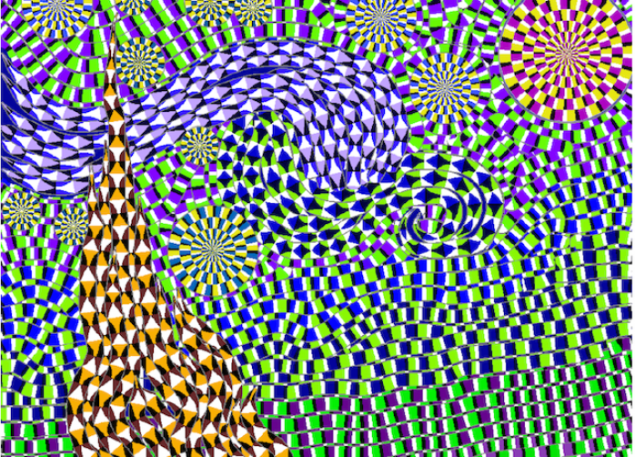
In the picture above did not move. This is not animation and video! Just by looking at it you feel as if fragments of images are moved. Unfortunately, scientists still do not know what causes us to experience the illusion of motion. Perhaps the reason lies in the peculiarities of perception of the movement of our eyes.
The disappearance of static images h2>
Look at the cross in the center of the screen. When you feel that the circle began to move the green dot, you will notice that the pink circles gradually disappear.
Visual neurons primarily focus on moving objects. If next to them are static objects, like in the video, they gradually "dissolve". But it is worth a little look away in the direction of how objects change their position in space relative to the retina. Because of this you will see them again.
Thatcher illusion h2>
It may seem that the two photos of the same inverted, and they depicted the same man. But if they expand to their normal position, you will notice that one of their eyes and mouth Man flipped. Scientists call this effect Thatcher illusion, because it was first shown in the photograph of Margaret Thatcher in 1980.
Why do we think that the same picture? We very rarely see the inverted face (as well as the inverted lips and eyes), so the brain is difficult to determine the distortion.
Color illusion h2> 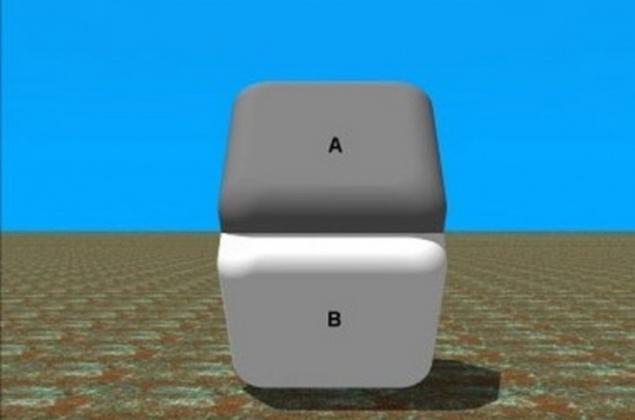
Tell me, what color are the squares A and B? Grey and white? Now close your finger zone of contact. You will see that they both have the same color, gray.
The object in the picture is perceived by us as three-dimensional. Upper square seems turned upwards and thus better lighted, so we perceive the color as it is. At the same time, the lower the square we perceive as being in the shade. The brain tries to determine its true color, yourself, "compensating for" low light conditions.
via www.publy.ru/post/19379








